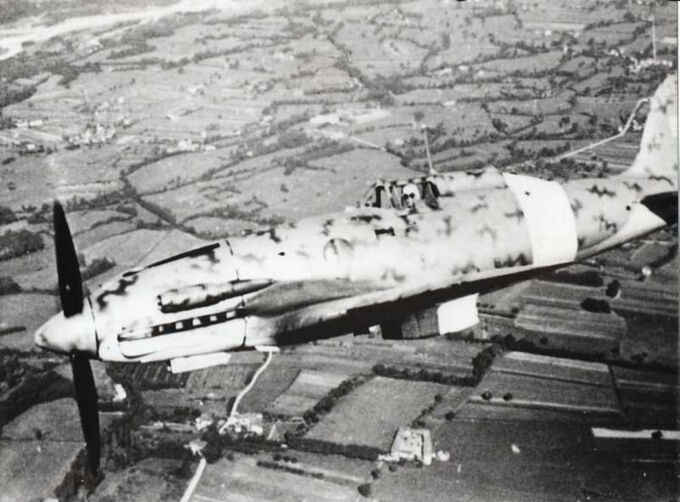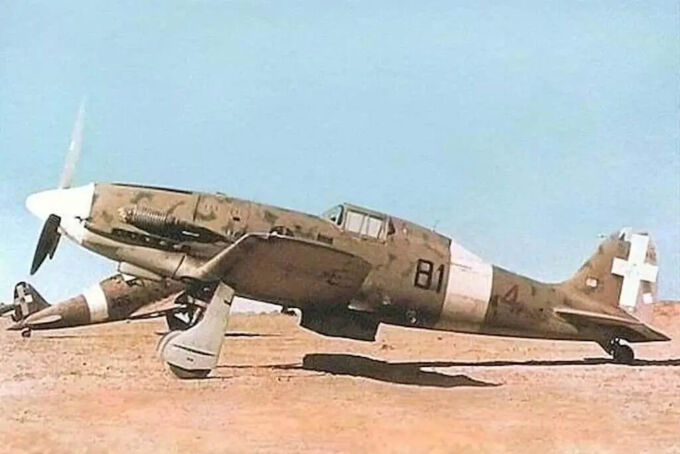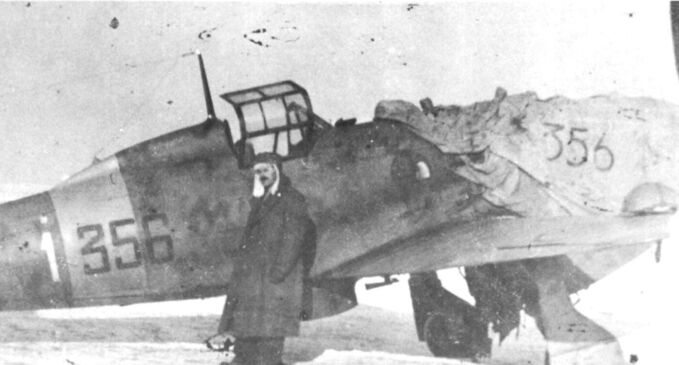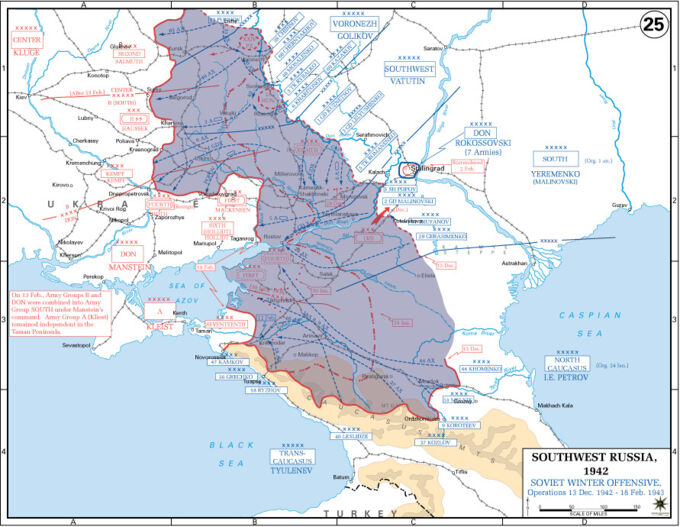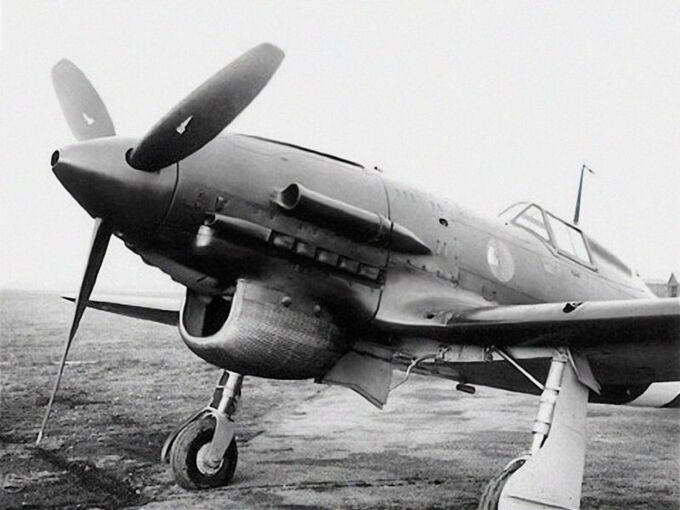The 'Folgore' (Italian for 'Lightning') is often compared to the Bf 109 in combat efficiency. Boasting a better K/D ratio than its German counterpart, the 'Lightning' produced some of Italy’s greatest aces, such as Adriano Visconti, and Franco Lucchini. Serving everywhere from the dunes of Tobruk to the snow-swept steppes of the USSR, this aircraft, whilst suffering from relatively weak armament when compared to Allied and German designs of the time, was still one of the most widely used aircraft of the Regia Aeronautica.
Origins
During the 1930s, Italy led the world in bi-plane designs. Producing aircraft like the CR. 32 and 42, the Regia Aeronautica had some of the most modern aircraft to its name. But, with the rise of the Luftwaffe and the production of all-metal monoplanes like the Bf 109, or the RAF’s Supermarine Spitfire, it was rapidly realised that newer designs were needed for Italy’s air arm. Thus, the DGCA (Direzione Generale Constuzione Aeronautiche) produced a specification for a low-wing monoplane with a retractable landing gear, armed with Breda machine guns. Macchi (one of Italy’s main aeronautics company) had their Head of Design, Mario Castoldi, design an aircraft to meet this specification, called the M.C.200 Saetta. (The M in the designation standing for Macchi, whilst the C for Castoldi). Whilst this aircraft was certainly an improvement over the older designs with an extremely sturdy frame, it suffered from one main problem: the use of a primitive radial engine (its top speed was a measly 504 km/h), rather than streamlined liquid-cooled designs used by foreign competitors. This was a great problem, as Italian designers initially failed to realise the benefits of such engines, which were more powerful, and easier to maintain. But it was soon realised that a change had to be made in Italian aircraft designs: and so the 'Folgore' was born.
Design and Development
In 1939, Castoldi experimented with adding the liquid cooled German made Daimler-Benz DB-601 (which was also used by the Bf 109 E series) to a new fuselage design, incorporating the M.C.200's wings and tail. Presented to the DGCA, the design was approved, and work on the prototype was started in January 1940. With the first flight in August, it was a great success; it flew at over 60 km/h faster than its predecessor, whilst still retaining the 'Saetta''s manoeuverability. In addition, Castoldi used his experience from the robust frame of the 'Saetta' to allow pilots to reportedly bring the aircraft into steep dives, reaching 800 km/h easily. Its main problem was its lack of armament, which was only 2 × 7.7 mm and 2 × 12.7 mm machine guns, which gave foreign fighter designs a distinct advantage in a dogfight. In truth, the 202 wasn’t much different to 200, the main differences being a liquid-cooled engine, sealed canopy and retractable rear wheel.
A note on the engine
Although originally a Daimler-Benz DB-601 engine was used, when it entered production, the M.C.202's powerplant was officially designated the Alfa Romeo R.A.1000 RC.4, but this was effectively a DB-601 produced under licence.
In Action
Malta, 1941-1942
Although slow to be introduced into the Regia Aeronautica, the M.C. 202 first saw action over Malta in late 1941 during the 'October Blitz', where it quickly gained a reputation as an effective dogfighter amongst its pilots. Being able to compete with and have an advantage over RAF designs in terms of speed and manoeuverability, it was always outclassed in armament. During this time, it was used for fighter sweeps, reconnaissance, ground attack and even shipping convoy attacks, illustrating the aircraft’s versatility. After a month, most were transferred to North Africa for a short period, but, in April 1942, the majority of 'Folgori' were shipped back to Sicily to continue operations over Malta. During this period, it really proved itself, notably engaging the escorts of major convoys, and achieving a high kill count.
North Africa, 1941-1943
Arriving in November 1941, the M.C.202 proved to be a rude awakening to the RAF in North Africa, as up until now the Regia Aeronautica's forces in Africa mainly comprised of the outdated CR.42, which was able to compete with the Gloster Gladiator at best. It was in this theatre that the 'Folgore' performed best, out-manoeuvering British P-40s and Spitfires with ease. One problem, though, was that like the Bf 109 F-4/Trop, its engine was prone to overheating, leading to a larger intake being added with a sand filter for the desert conditions. Aircraft carrying this modification were re-designated the M.C.202 AS, which is an abbreviation for the Italian for 'North Africa'
With a rise in Special Air Service raids in the winter of 1941–1942, many of the few M.C.202s in Africa were destroyed (the 1° Stormo lost 13.3% of its strength due to these raids), forcing them to be relocated further behind friendly lines. But, they soon went into action again, supporting the air attacks over Tobruk and the sweeping advances of El Alamein.
Retreat
Eventually, in early 1943, with the arrival of the Americans, the remaining Squadriglia of 'Folgori' were desperately trying to stem the immense flow of Allied forces into Tunisia; but, with a severe lack of spare parts, aircraft and manpower, it proved to be too much. Thus, the few airworthy aircraft remaining were withdrawn to Sicily to await the Allied invasion which was soon to come.
Sicily and Italy, 1943
During this time, the Folgore Squadrigilia based in and around Sicily found themselves to be constantly on the defensive, repelling the mass Allied air-raids that were taking place. Although Allied ground attacks were taking a heavy toll on the strength of M.C.202s, the combat mission count shot up, with a recorded 690 sorties being carried out in July alone, shooting down 375 aircraft. But, by the end of Operation Husky, most of the 'Folgore' units had been annihilated and lost some of their best aces, like Franco Lucchini (killed whilst intercepting B-17s over Sicily), with only around 100 aircraft being deemed combat ready in Italy.
By the Italian collapse in late 1943, the remaining 'Folgori' were partitioned. Some were brought under control of the of the Italian Co-Belligerent Air Force, whilst others flew under the Balkenkreuz of the Luftwaffe.
The Eastern Front, 1942-1943
In September 1942, as Mussolini’s 'New Roman Empire' was starting to crumble around him, so the offensives on the Eastern Front for the Germans started to stall. Therefore, in a last show of solidarity (and fearing that it wouldn’t get part of the USSR when it was carved up), Italy sent its 21° Gruppo Autonomo C.T., equipped mainly with M.C.202s (there were some M.C.200s and BR.20s as well), to Ukrainian airfields, to aid the Siege of Stalingrad, which was about to begin. The 'Folgori' originally performed ground attack runs on Soviet convoys near the Don River, and bomber-escort missions with BR.20s over Stalingrad and the surrounding area, supporting the Italian 8th Army’s advances around the Crimea. As the famous Russian winter set in, however, the number of sorties drastically decreased, as not only was visibility awful, but things such as the oil in the engines could freeze, literally disabling the 'Folgori'.
However, M.C.202 units still partook in missions during this time. For example, on the 11th of December 1942, as the German forces were thoroughly encircled at Stalingrad, M.C.202s escorted Ju 52s into the Stalingrad airlift, in a desperate attempt to resupply the trapped German forces.
In early 1943, the Soviet winter counter-offensive had swiftly pushed into the Donbas Region, where most of the M.C.202 units were located. With this offensive had come incessant attacks on Axis airfields by Soviet IL-2s, and a lack of fuel, as most of it had to be used by more front-line units that were holding the line.
Thus, as the snow started to clear in March, the remaining serviceable 'Folgori' were withdrawn to second-line airfields in Odessa, where few notable missions were carried out.
Post-war service and other countries that operated the MC.202
Post-War
After Fascist Italy’s collapse in 1943, some of the remaining M.C.202s were captured in Sicily by the occupying American and British forces, and were shipped to the USA for flight trials and testing (one such specimen can be seen at the National Air and Space Museum). Here they were placed in mock dogfights with Allied aircraft, out-peforming nearly all of them in manoeuverability. In Italy, the 'Folgori' remained in service as training aircraft until 1948, when they were replaced by the T-6 Texan trainer.
Other Operating Countries
Egypt
In 1946, the Egyptian Air Force went to Macchi, asking for a modern fighter to compete with Israeli designs. Macchi agreed, and so in 1947 an order was placed for 31 MC.202s — albeit with different engines — along with some G.55s and the 'Folgore''s successor, the MC.205 'Veltro'. 15 of these had been delivered by the end of the First Arab-Israeli War, where they played a great role, dogfighting the Israeli Spitfires and Mustangs in the Sinai Peninsula. The remaining aircraft having been delivered, they remained in Egyptian service until 1951, taking part in skirmishes along the Israeli border.
Croatia
In early 1944, 16 M.C.202s were delivered to Croatia, in order to strengthen the weak Zrakoplovstvo Nezavisne Države Hrvatske (Air Force of the Independent State of Croatia). When they arrived, they entered service with one unit, Kroat. JGr 1 whose aircraft carried German markings. Another unit was also equipped with the 'Folgore', but this was for training. By April, JGr 1's MC.202s were fully in action, repelling the incessant Allied air raids on Croatian factories. Although not well regarded by Croatian pilots, this unit claimed some 20 American aircraft downed by August. But, due to a lack of armament compared to the heavily armed B-17s and B-24s, the 'Folgori' were withdrawn from Croatian service in September, being replaced by the superior BF 109 G series.
Variants that appear in War Thunder
This type, the Serie VII was produced between April and June 1942. Whilst generally similar to previous types, it featured two main differences: it had an armoured windscreen, and x2 Breda SAFAT 7.7 mm MGs in the wings. This type could also carry x2 50-150 kg bombs under its wings. 100 were produced.
This was an experimental type made in 1943, armed with a pair of German Mauser MG 151 cannons under the wings (the EC stands for Esperimento Cannoni, or 'Experimental Cannons'). Only 5 were made, and it never saw service.
This design was another experiment in late 1941, which involved placing the coolant radiator of the DB-601 engine under the engine itself, with the aim of making it easier to maintain, as the delicate and complex cooling tubes could be replaced with a simplified radiator. It produced excessive drag, though, and so it never went into production.
